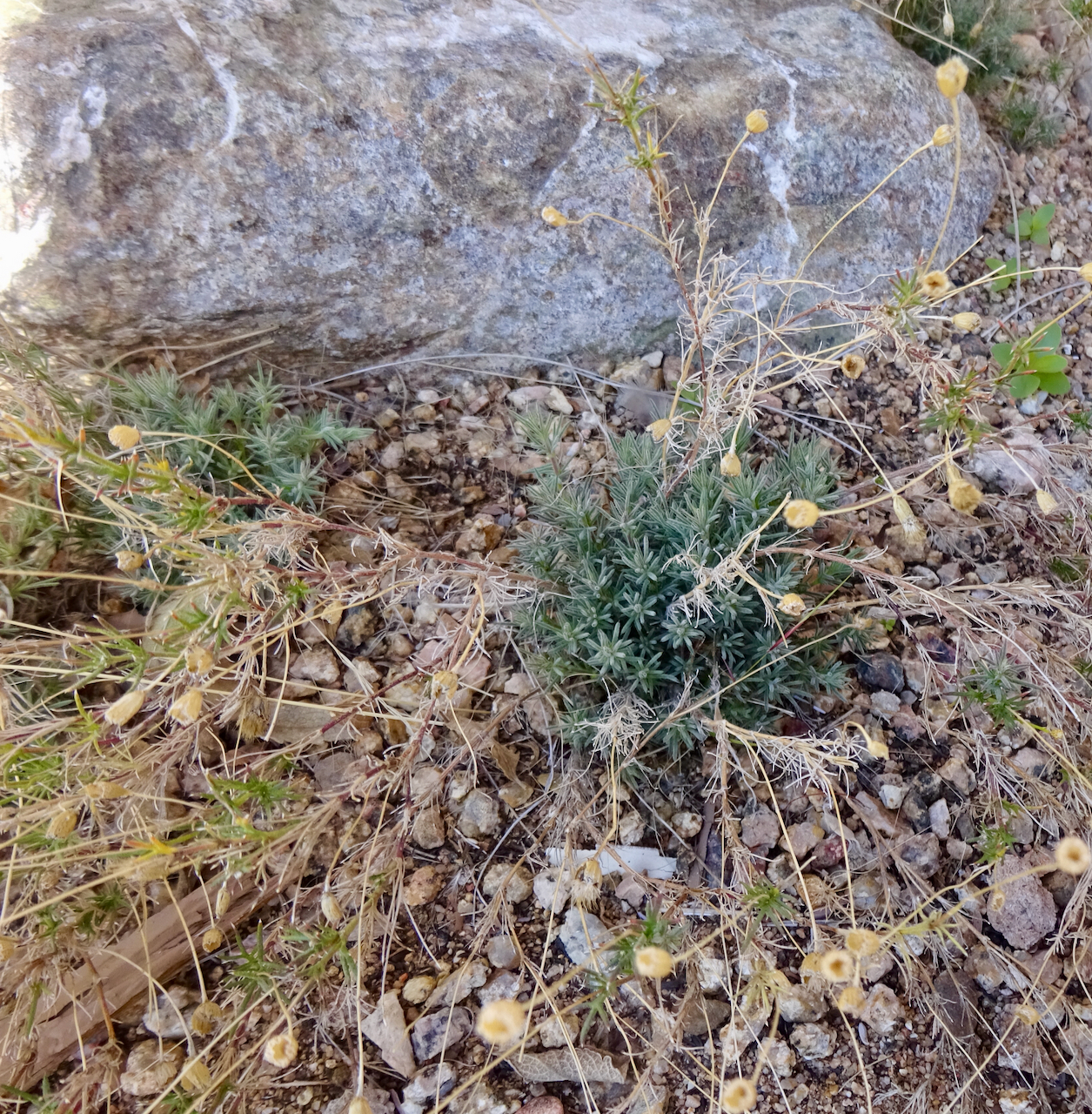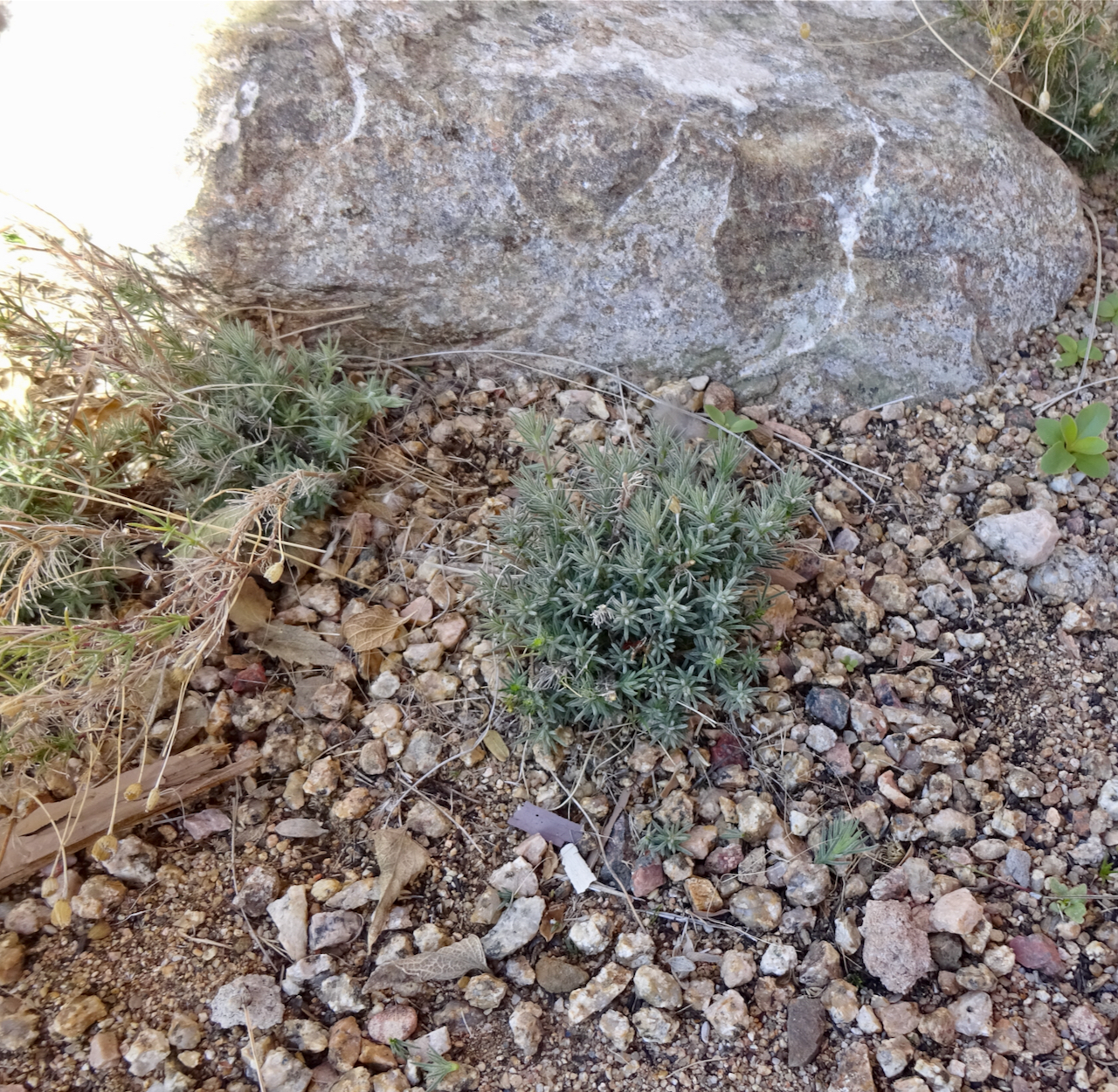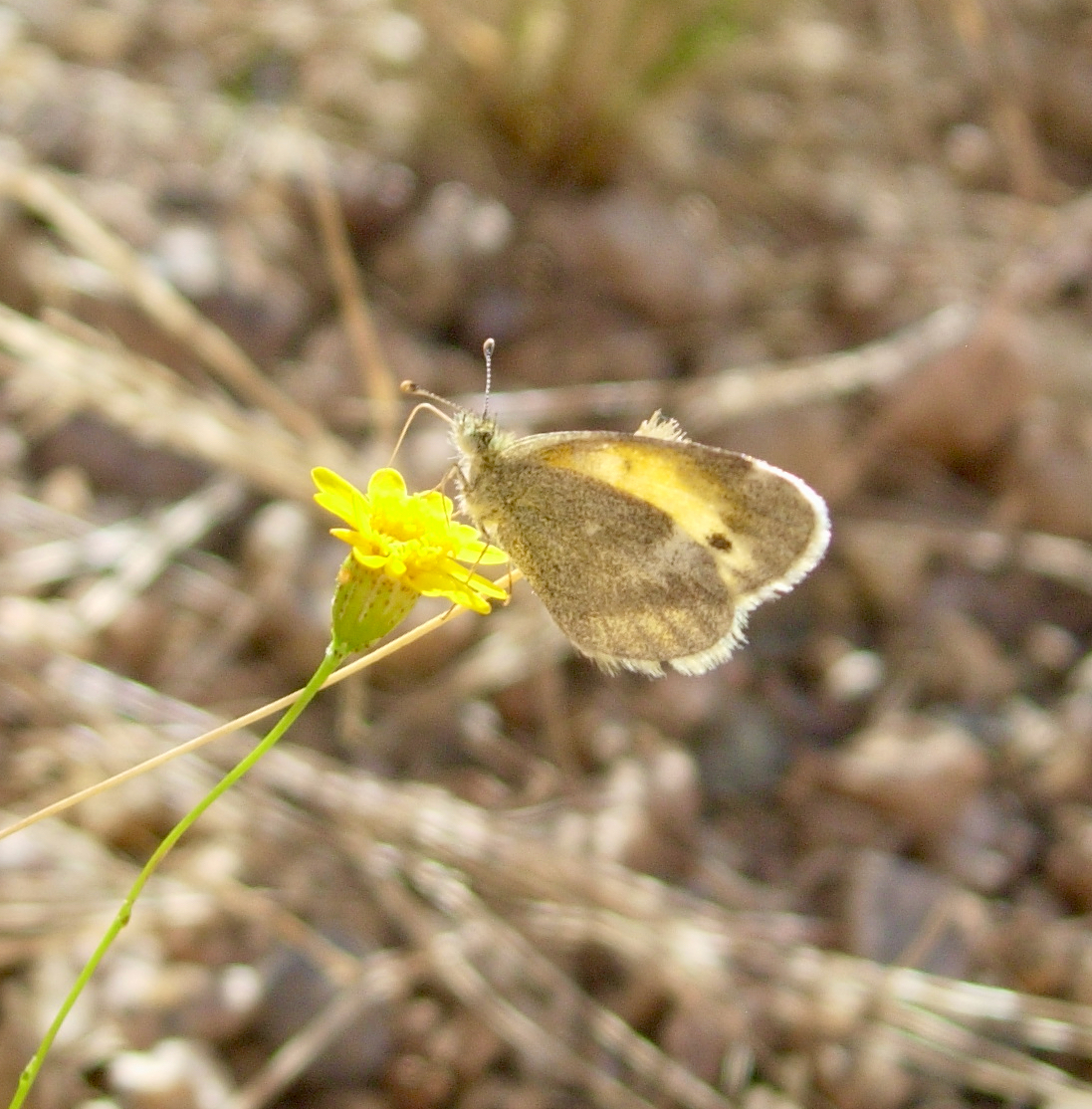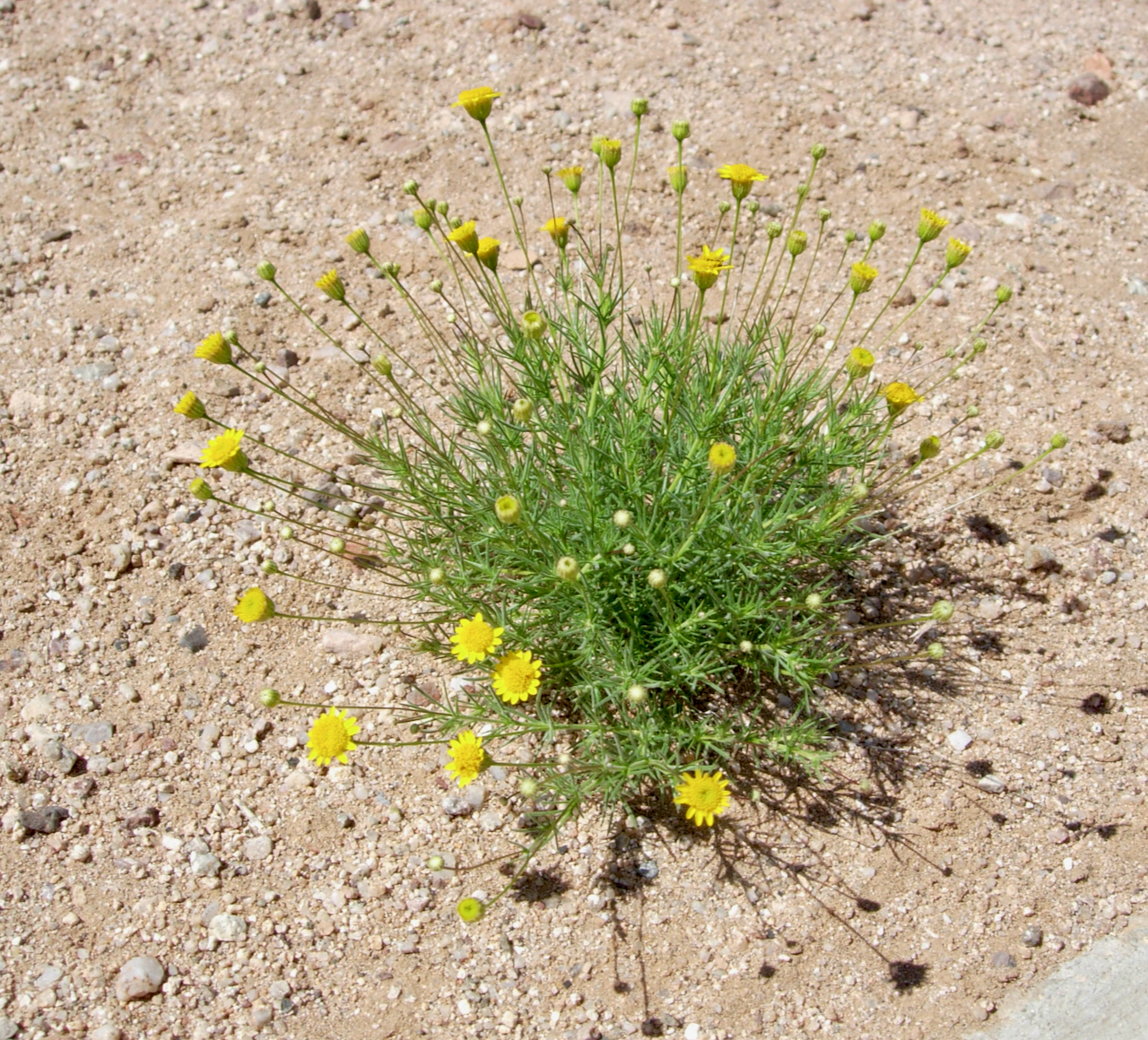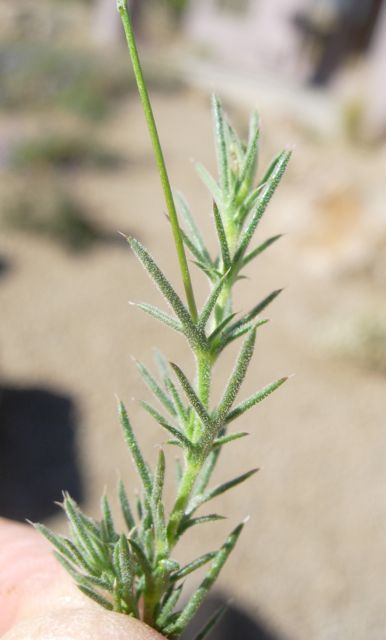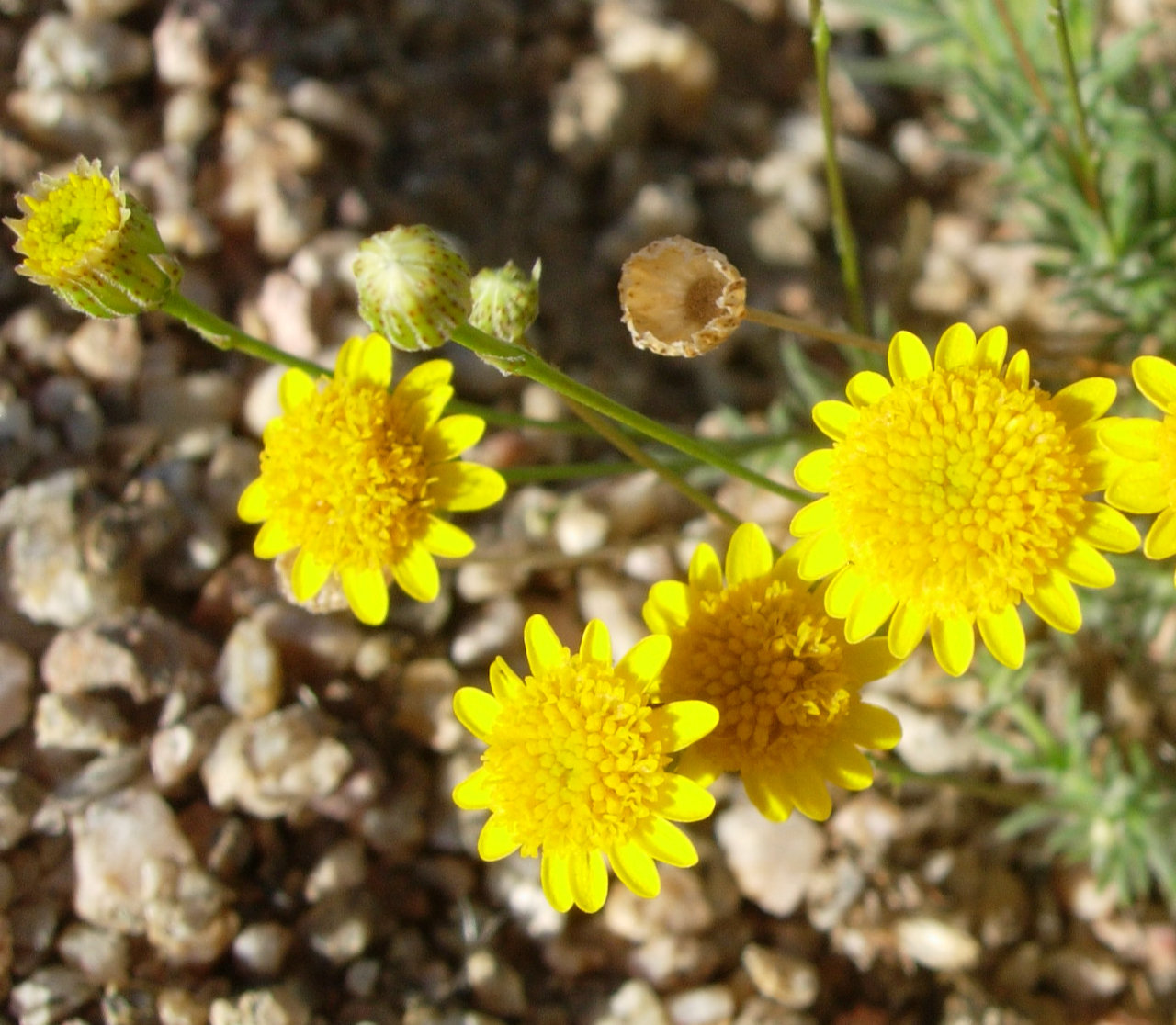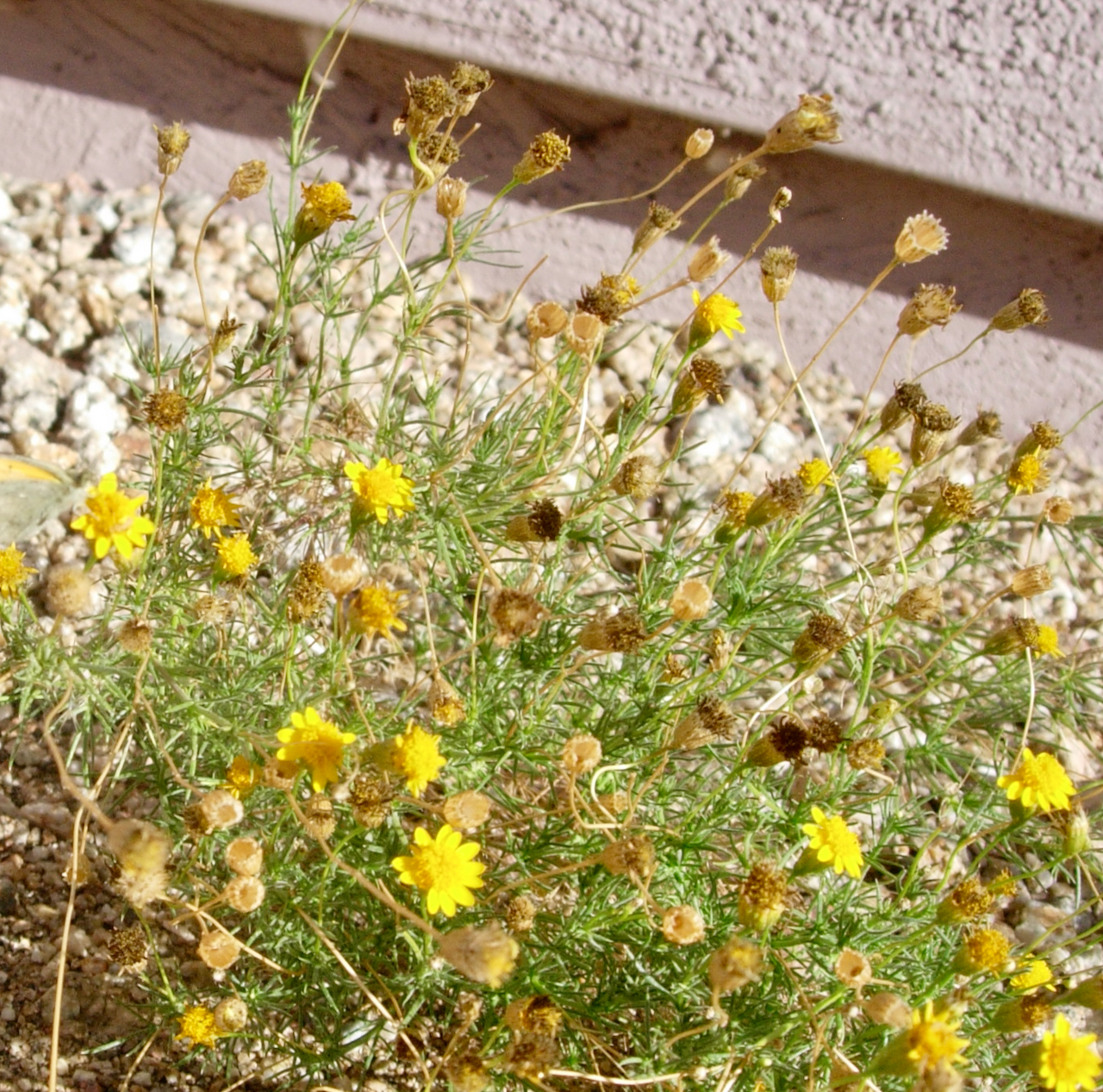Golden Dyssodia
Thymophylla pentachaeta
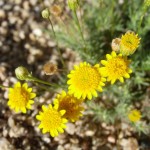
About the Plant
Golden dyssodia is a short-lived perennial that flowers most of the year, slowing only for the coldest or hottest seasons. Reaching only to 8 inches, this native can serve as a groundcover if planted densely. Its dark green, feathery leaves help soften the appearance of hard surfaces.
Grow golden dyssodia in full sun. It can survive on natural rainfall once established. It reseeds readily. Seedlings can replace older plants that die. You may have more trouble restricting its spread than maintaining a perennial planting. Care for the plants by cutting low in spring just above new growth to maintain appearance. Previous years growth will often die to near the ground over the winter.
The two photos below show the same plants. In the top photo, old stems remain on the plants in late winter. In the second photo, the old stems of the plant to the right have been cut off, revealing the new spring foliage.
Notes: Previous name for this plant was Dyssodia pentachaeta and you will still see it listed under this name. This plant has numerous common names including common dogweed, fiveneedle pricklyleaf, fiveneedle fetid marigold, and golden dogbane.
Wildlife value: nectar plant for butterflies and pollinators, larval plant for dainty sulfur butterfly.
More Information
Weekly Plant on golden dyssodia
How to Identify Golden Dyssodia by Jim Conrad
Horticultural information from ASU
In books:
Native Plants for Southwestern Landscapes by Judy Mielke, page 131 (note under Dyssodia acerosa)
Perennials for the Southwest by Mary Irish, page 257
